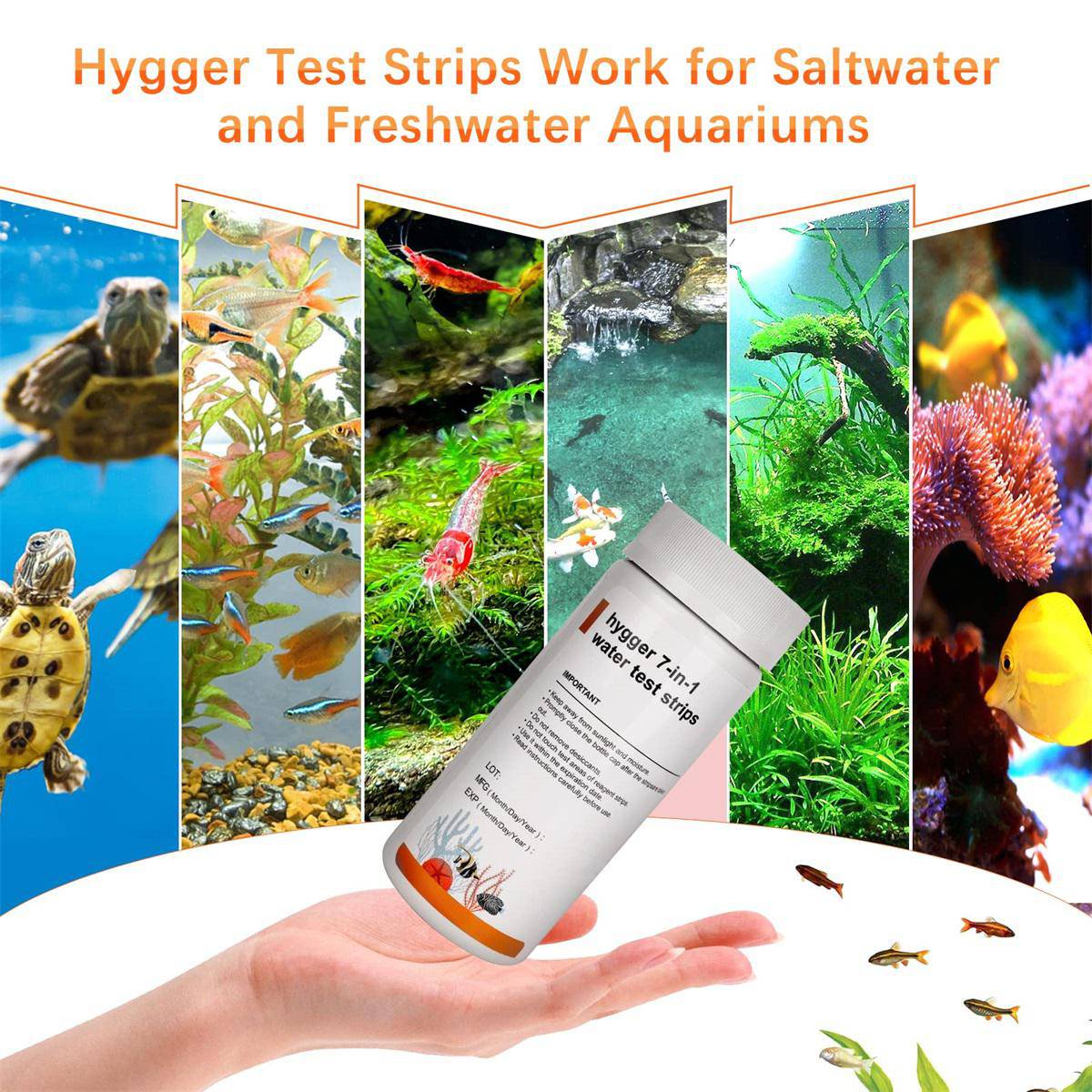Do You Want to Find More Tang Fish
As one of the popular vibrant and captivating saltwater fish, Tang fish can be an excellent addition to saltwater aquariums. Generally, Tang fish come in blue, yellow, orange, purple, etc. Interestingly, they can change coloration and pattern as they mature. In this guide, we will focus on Tang fish. For instance, types of tang fish, their temperament, features, diet, and care guide.
Types of tang fish
Tang fish, also famous as surgeonfish, belong to the Acanthuridae family. In this segment, let’s learn some common types of tang fish.
Yellow Tang (Zebrasoma flavescens)
Featuring a distinctive oval body shape in bright yellow, yellow tang fish has a small mouth with bristle-like teeth designed for grazing on algae. Also, they are active swimmers and require a well-established marine aquarium with plenty of swimming space and a varied herbivorous diet to thrive.
Blue Tang (Paracanthurus hepatus)
Blue tang fish, also famous as Regal tang or Dory fish, have a vibrant blue body with black markings and yellow tail fins. As active swimmers, they require a spacious aquarium with plenty of hiding places. Plus, blue tang fish are herbivorous, and they need a balanced diet.
Powder Blue Tang (Acanthurus leucosternon)
Powder blue tang fish are visually stunning saltwater fish with distinct features. They boast a vibrant powder blue body with a contrasting yellow dorsal fin and a striking black face mask. Considering the specific care requirements, the Powder Blue Tang fish are best suited for experienced aquarists.

Sailfin Tang (Zebrasoma veliferum)
Sailfin tang has a unique body shape with a tall and sail-like dorsal fin. Its body coloration varies from brownish to yellowish with dark vertical stripes. They can grow quite large and need ample swimming space.
Kole Tang (Ctenochaetus strigosus)
Kole tang fish are also named yellow-eyed tang or goldring tang. They have a yellowish-brown body with a black mask over its eyes. Also, they are known for their algae-eating habits and can be beneficial in controlling algae growth in aquariums.
Purple Tang (Zebrasoma xanthurum)
Purple tangs possess a vibrant purple body with a yellow tail and dorsal fin. They are highly prized for their striking coloration. Plus, they have a sleek and elongated body shape, along with a sharp spine near the tail. However, this tang species is sensitive and requires pristine water conditions.
What do blue tang fish eat
Diet of blue tang fish
Blue tang fish are herbivorous and primarily consume various types of marine algae and seaweed. Their diet consists of:
- Marine algae
Blue tangs consume a variety of marine algae, including filamentous algae, microalgae, and macroalgae. They graze on the algae that naturally grow in their environment, such as diatoms, green algae, and brown algae.
- Seaweed
In addition to algae, blue tangs also eat different types of seaweed. They may consume species like red seaweed (Rhodophyta) and brown seaweed (Phaeophyceae) that are available in their habitat.
- Commercial foods
Blue tangs in aquariums can be fed with commercial foods specifically formulated for herbivorous marine fish. For example, flakes, pellets, or frozen foods usually contain algae, vegetables, and other nutrients.
- Fresh vegetables
Blanched or finely chopped vegetables, like spinach, kale, lettuce, and seaweed sheets (Nori), can be provided to supplement their nutritional needs.

The diet differences
In this part, we will share the diet differences between tang fish from the Indian Ocean and the Red Sea and tang fish kept in saltwater aquariums.
- Diet of tang fish from the Indian Ocean and Red Sea
In their natural habitat, Tang fish have access to a wide variety of food sources. They primarily feed on algae, including filamentous, micro, and macroalgae. Commonly, they use their specialized mouths and teeth to scrape algae off rocks and other surfaces. Additionally, they may consume small invertebrates and zooplankton found in the water.
- Diet of tang fish kept in aquariums
When Tang fish are kept in aquariums, you should be careful to manage the diet to meet their nutritional requirements. Though algae are still part of food sources, it is challenging to provide the same diversity and quantity of algae as found in their natural habitat. Thus, feeding some commercial algae-based foods is feasible, such as seaweed sheets or pellets specifically formulated for herbivorous marine fish. These foods often contain a blend of algae and other plant-based ingredients to provide a balanced diet.
The tank environment does tangs required
Tank size
Tang fish are active swimmers. The minimum Tang fish tank size can be 75 gallons. However, the ideal tank size can vary depending on the species of Tang fish. Generally, considering their size, swimming behavior, and territorial nature, large tanks are better choices.
For smaller species of tang fish, a tank size of at least 75 gallons (284 liters) is recommended, such as the Yellow Tang (Zebrasoma flavescens). For larger tang species, the minimum tank size should be 125 gallons (473 liters) or more to provide ample swimming space and minimize aggression between tangs. i.e., the Powder Blue Tang (Acanthurus leucosternon) and the Achilles Tang (Acanthurus Achilles).
Water conditions
Tangs are sensitive to water quality, so maintaining stable water conditions is crucial. Regular water testing is essential to monitor parameters such as temperature, pH, ammonia, nitrite, and nitrate levels. Commonly, tangs prefer a pH range between 8.1 and 8.4 and a temperature of 75℉-79℉ (24℃-26℃).
Filtration & Circulation
Efficient filtration and water circulation are vital for tang tanks. A high-quality filtration system, including mechanical, chemical, and biological filtration, helps remove waste and maintain clean water. Additionally, power heads or wavemakers can be used to create gentle water movement, mimicking their natural reef habitat.
Live rock
Tangs are happy to see live rock in their tank. Live rock provides hiding spots and grazing surfaces for algae. While it helps establish beneficial bacteria. Plus, it also aids in creating a natural-looking environment for the tangs to explore.
Lighting
Tangs benefit from ideal lighting that supports the growth of beneficial algae. A lighting system that provides adequate intensity and a spectrum suitable for photosynthesis will promote the growth of algae and other beneficial organisms.

Tankmates
Tangs can be territorial and aggressive, especially towards other tangs or similar-shaped fish. To prevent aggression and provide enough space for each fish to establish territories, you’d better research compatible tankmates before introducing new fish. Take blue tang fish as an example, clownfish, gobies, and dwarf angelfish are excellent tank mates.
Additionally, here are some tips. Different tang species may have specific care requirements and temperaments, so it is crucial to research the needs of particular species. Providing a well-maintained aquarium with suitable conditions helps ensure the health of tang fish in captivity.
What factors can affect the life span of tang fish
The maintenance would affect the life span of tang fish. In this segment, let’s take a look at factors affecting tang fish’ lifespan.
- Water quality
Poor water conditions, such as high ammonia, nitrite, or nitrate levels, can stress your fish and make them more susceptible to diseases.
- Tank size and space
Inadequate tank size can lead to restricted movement, aggression, and compromised health.
- Diet and nutrition
A diet lacking in essential nutrients or imbalanced in any way can lead to nutritional deficiencies, weakened immune systems, and shortened lifespans.
- Tankmates and compatibility
Proper tankmates minimize stress, aggression, and injuries. Choosing peaceful tankmates and providing enough space and hiding spots can contribute to a harmonious tank environment.
- Disease prevention and quarantine
Tangs are susceptible to various diseases, including marine ich (Cryptocaryon irritans) and other parasites. Implementing a proper quarantine procedure for new additions to the tank and regularly monitoring the fish for signs of illness can help prevent the spread of diseases and improve their chances of a longer life.
To sum up
Featuring striking colors and unique body shapes, tang fish will make your aquarium special. So, if you have a saltwater tank, why not have a try? It won’t let you down!
Related topic about tang fish: Building a Special Tank for Tang Fish





